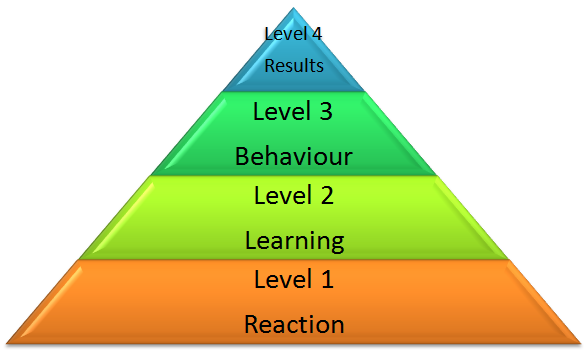Kirkpatrick’s Four-Level Training Evaluation Model can help you to answer questions like these. You can use it to analyze the impact of training objectively, to work out how well your team members learned, and to improve their learning in the future.
The Kirkpatrick Model is an internationally recognized tool for evaluating and analyzing the results of educational, training and learning programs. It consists of four levels of evaluation: Reaction, Learning, Behavior, and Results. Each successive level of the model represents a more precise measure of the effectiveness of a training program.
Donald Kirkpatrick, former Professor Emeritus at the University of Wisconsin, first published his model in 1959. He updated it in 1975, and again in 1993, when he published his best-known work, “Evaluating Training Programs.”
It was developed further by Donald and his son, James; and then by James and his wife, Wendy Kayser Kirkpatrick. And in 2016, James and Wendy revised and clarified the original theory, and introduced the “New World Kirkpatrick Model” in their book, “Four Levels of Training Evaluation.” One of the main additions is an emphasis on the importance of making training relevant to people’s everyday jobs.

Level 1: Reaction
The first level of criteria is “reaction,” which measures whether learners find the training engaging, favorable, and relevant to their jobs. This level is most commonly assessed by an after-training survey (often referred to as a “smile sheet”) that asks students to rate their experience.
Level 2: Learning
Level 2 gauges the learning of each participant based on whether learners acquire the intended knowledge, skills, attitude, confidence and commitment to the training. Learning can be evaluated through both formal and informal methods, and should be evaluated through pre-learning and post-learning assessments to identify accuracy and comprehension.
Level 3: Behavior
One of the most crucial steps in the Kirkpatrick Model, Level 3 measures whether participants were truly impacted by the learning and if they’re applying what they learn. Assessing behavioral changes makes it possible to know not only whether the skills were understood, but if it’s logistically possible to use the skills in the workplace.
Oftentimes, evaluating behavior uncovers issues within the workplace. A lack of behavioral change may not mean training was ineffective, but that the organization’s current processes and cultural conditions aren’t fostering an ideal learning environment for the desired change.
Level 4: Results
The final level, Level 4, is dedicated to measuring direct results. Level Four measures the learning against an organization’s business outcomes the Key Performance Indicators that were established before learning was initiated. Common KPI’s include higher return on investments, less workplace accidents, and larger quantity of sales.
Using the Kirkpatrick Model creates an actionable measurement plan to clearly define goals, measure results and identify areas of notable impact. Analyzing data at each level allows organizations to evaluate the relationship between each level to better understand the training results and, as an added benefit, allows organizations to readjust plans and correct course throughout the learning process.
If your organization is ready to take the next step in learning, send us a message! Ardent’s team of experts will walk you through viable solutions, and discuss how to use the Kirkpatrick Model to get the results your team needs.